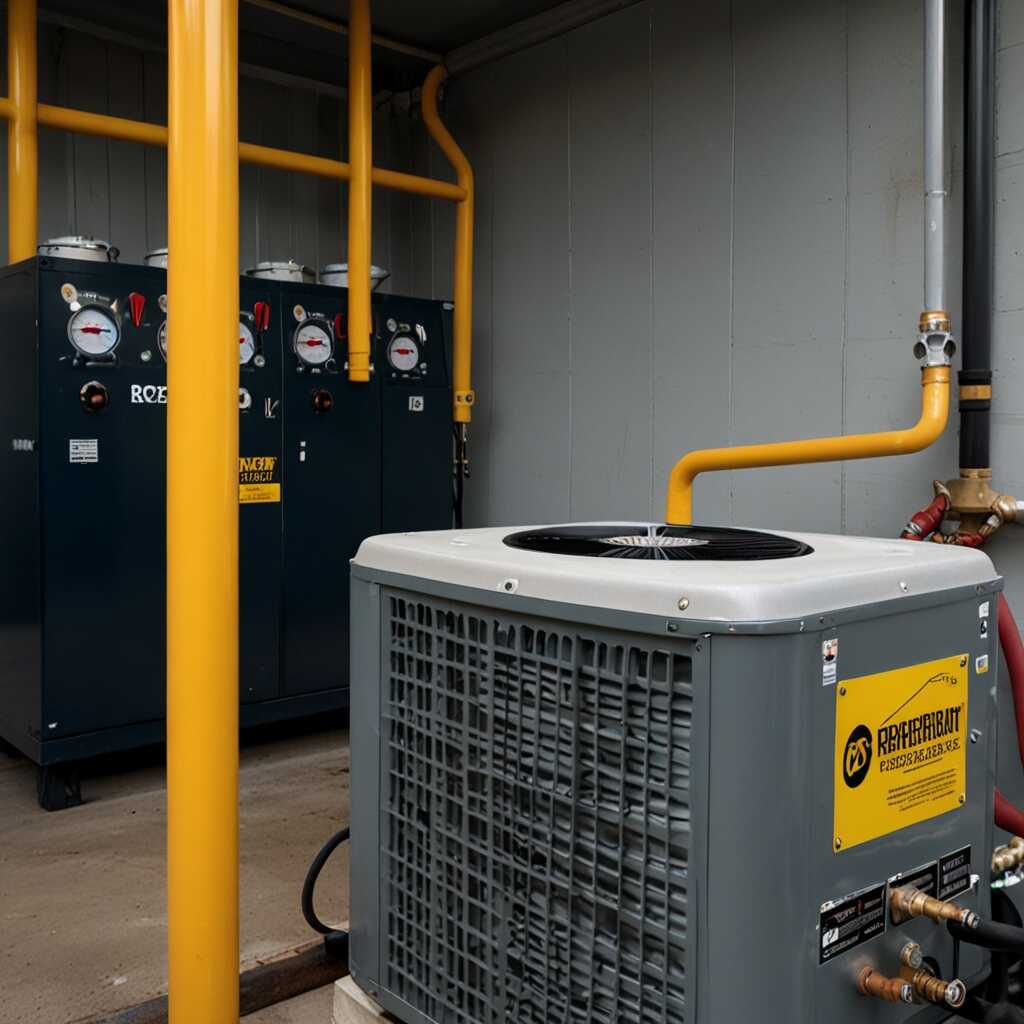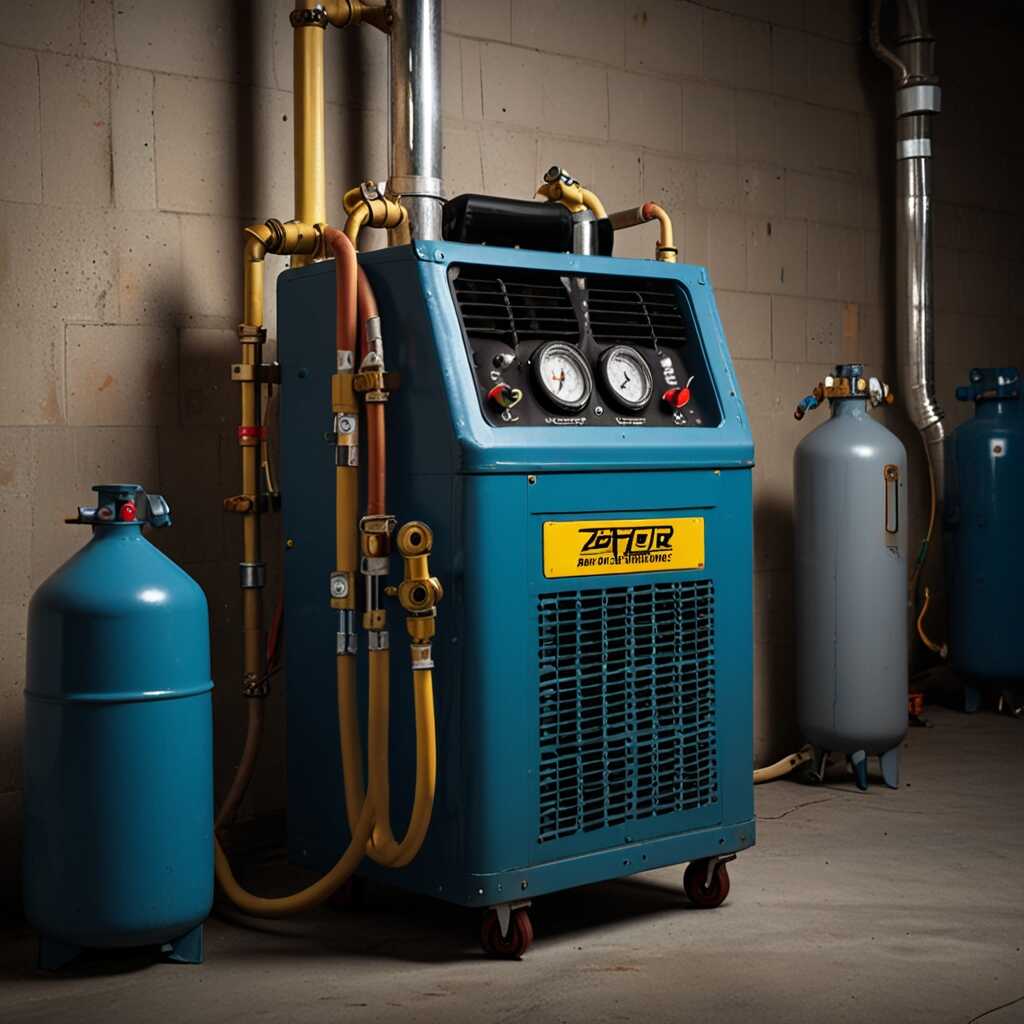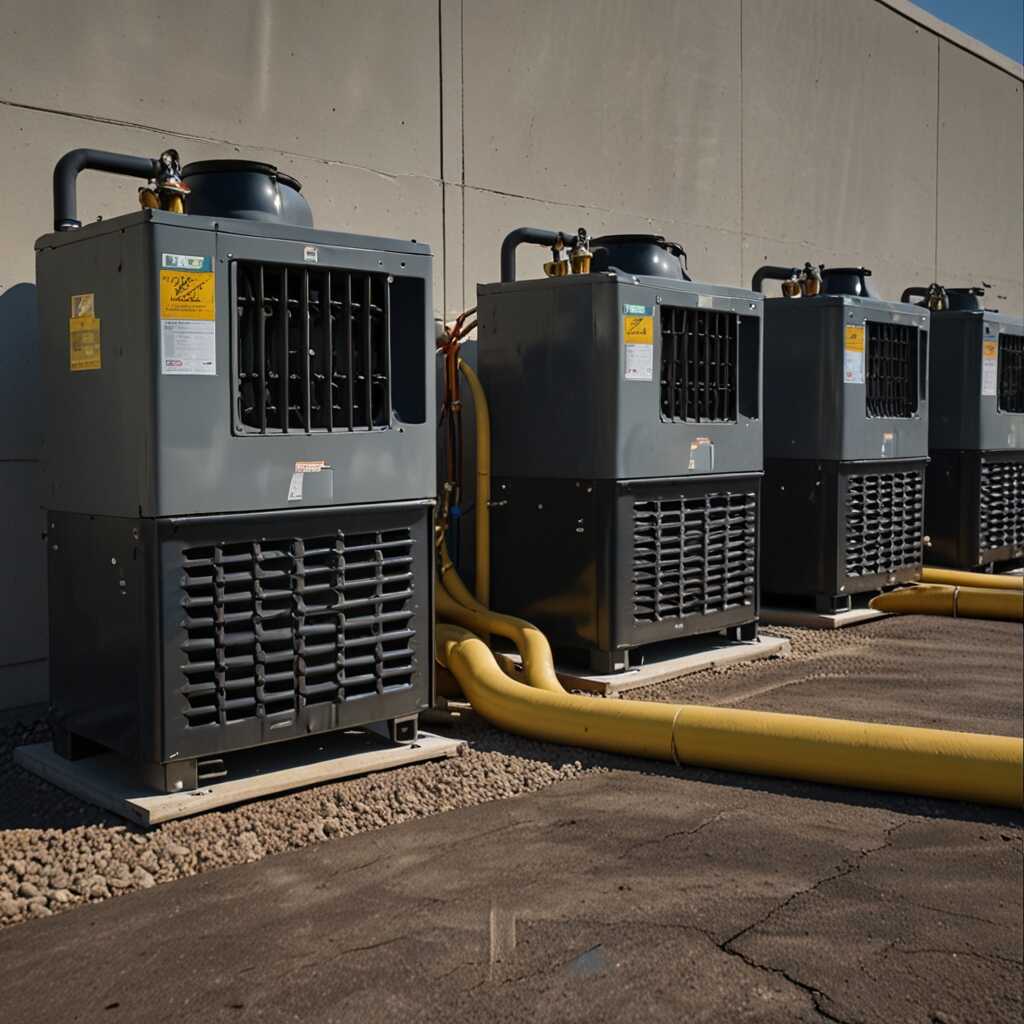Understanding vacuum ratings of refrigerant recovery machines is crucial for purging HVAC systems effectively. The right vacuum level ensures complete refrigerant removal and system efficiency. Refrigerant Recovery Pro provides insights into vacuum ratings, best practices, and regulatory standards to support HVAC professionals. Equipped with expert knowledge, we guide you through the intricacies of refrigerant recovery and management.
Critical Role of Refrigerant Recovery in HVAC Maintenance
Refrigerant recovery is essential for HVAC system upkeep. It directly impacts system reliability and efficiency. Proper refrigerant management practices improve environmental safety. Regulations govern refrigerant handling to ensure compliance and minimize harmful emissions. Each HVAC technician must be familiar with these regulations. For example, the EPA mandates leakage tests during recovery procedures. Failure to comply can lead to fines. Also, efficient recovery can handle larger amounts of refrigerant, often exceeding amounts like 200 pounds. Understanding these aspects enhances the effectiveness of HVAC work.
Understanding Refrigerant Recovery Regulations
Regulations surrounding refrigerant recovery are crucial for HVAC professionals. They ensure compliance and prevent environmental harm. The EPA has outlined specific guidelines for refrigerant handling. Each technician must keep current with this information. Regulations can differ by state. Some require technicians to obtain specific certifications. Knowledge of these regulations enhances the reliability of HVAC systems. It ensures a high level of environmental responsibility. Regular training and updates help maintain compliance. Effective refrigerant management not only adheres to rules but actually improves service performance.
Explaining the Concept of Vacuum Ratings
Vacuum ratings indicate how much air and moisture a refrigerant recovery machine can remove from a system. These ratings are crucial for ensuring a complete and effective system purge. Higher vacuum ratings signify better performance, helping to achieve optimal recovery efficiency. For HVAC professionals, understanding these ratings enhances the reliability of their refrigerant management processes. Various factors, including machine design and capacity, impact these ratings. It is essential to select a machine that meets the required vacuum levels to ensure proper system maintenance and compliance with regulatory standards.
Importance of Selecting the Right Vacuum Rating
Selecting the right vacuum rating for your refrigerant recovery machine directly impacts the performance efficiency of HVAC systems. Typically, efficient machines operate well within a range of 500 to 100 microns. Machines capable of achieving below 500 microns are essential for effectively eliminating moisture and air from the system. HVAC technicians must consider specified vacuum ratings when choosing recovery equipment, as it determines the quality of recovery and overall system reliability. Proper testing and review of machine performance against these standards can help HVAC professionals enhance their practices. Partnering with experts from Refrigerant Recovery Pro ensures access to the best options and reliable insights on equipment performance.

Key Factors That Impact Vacuum Performance
The performance of refrigerant recovery machines is heavily influenced by numerous factors. Machine design features, such as pump capacity and efficiency, are essential in determining how well units can handle vacuum levels. Proper maintenance practices, including regular filter changes and leak checks, enhance performance reliability. Environmental conditions also play a crucial role; high humidity can negatively affect vacuum efficiency. The ideal vacuum level that recovery machines should achieve typically ranges from 25 to 30 inches of mercury, a standard for maximum efficacy.
Understanding Machine Design Features and Performance
Machine design features significantly determine vacuum performance efficiency in refrigerant recovery systems. High-quality pumps with durable components can easily reach optimal vacuum levels. The vacuum system should be designed for fast recovery to minimize downtime. Efficiency testing has shown that machines with a well-designed vacuum relief valve perform better. Sturdy vacuum hoses and fittings also ensure reliability and prevent leaks that compromise vacuum levels. Investing in reviews of various machine designs can provide valuable insights, ensuring HVAC technicians choose equipment that offers the best performance and durability.
Essential Numerical Data for Vacuum Technologies in HVAC Systems
- Refrigerant recovery machines typically operate between 0 to 30 inches of mercury (Hg).
- A well-rated machine achieves vacuum levels of 10 microns or less.
- Vacuum pumps used in recovery can have CFM (Cubic Feet per Minute) ratings between 1-5.
- Regulations often require a minimum vacuum of 500 microns during system evacuation.
- Vacuum gauges measure the pressure in the recovery system, usually in inches of mercury.
- High-efficiency models can recover refrigerants at a rate of 20 lbs or more per minute.
- Service life for vacuum pumps can extend to over 10 years with proper care.

Addressing Common Myths in Refrigerant Recovery
Many HVAC professionals believe that all refrigerant recovery practices are equal. This is a misconception. Effective refrigerant recovery practices rely on understanding key factors such as vacuum efficiency ratings and machine capabilities. Different refrigerant recovery machines have varying levels of performance and reliability. For example, some machines may handle lower vacuum levels but struggle with higher efficiency, impacting results. The minimum vacuum level required is often around 500 microns for effective recovery. This ensures the system is properly purged and free of contaminants.
Understanding Vacuum Levels and Machine Performance
Vacuum levels play a critical role in refrigerant recovery. Reliable machines are designed to achieve low vacuum levels quickly, ensuring effective refrigerant management. Machines that can easily reach vacuum levels below 500 microns deliver greater consistency in performance. Choosing machines based on reviews and data regarding their vacuum efficiency can enhance your recovery efforts. Always consider the features and capabilities of different models, as not all are built with the same quality or durability. Reliable manufacturers provide detailed specifications that help HVAC professionals make informed choices.

Step-by-Step Guide to Achieving System Purge
To achieve an effective system purge with refrigerant recovery machines, follow these key steps: First, safely disconnect the power and ensure refrigerant is entirely evacuated from the HVAC system. Next, connect the refrigerant recovery machine’s hoses securely to the service ports, ensuring the right connections and tight seals. Then, set the refrigerant recovery machine for vacuum and monitor the gauge to ensure it reaches the desired vacuum level. Using a machine with a favorable vacuum rating enhances reliability and speeds up the process. For best results, observe the manufacturer’s guidelines and use machines like XYZ model which are known for their durability and performance. Finally, confirm that the system has reached a vacuum of at least 500 microns, as this is crucial for removing moisture and ensuring an effective purge.
Understanding Vacuum Ratings and Their Impact on System Performance
The vacuum rating of a refrigerant recovery machine is critical for its efficiency during the purge process. A higher vacuum rating can handle more water vapor and contaminants, significantly reducing moisture in the HVAC system. Machines designed with a vacuum range of 500 to 200 microns are considered optimal for effective purging. This level improves system performance and longevity by preventing acid formation and corrosion. Trusted models are engineered to deliver consistent vacuum levels, ensuring that air and moisture are efficiently removed. Regularly testing equipment and comparing features across different brands helps you make a well-informed choice. Always refer to user reviews and detailed product specifications to find machines that meet these necessary criteria.
Advantages of Fully Understanding Vacuum Strength in Refrigerant Handling
- Effective purging prevents refrigerant contamination in HVAC systems.
- Enhanced equipment longevity occurs when using proper vacuum practices.
- Lower energy costs result from efficient recovery methods.
- Improved safety standards are maintained through effective refrigerant handling.
- Compliant operations avoid fines and support regulatory safety guidelines.
- Better performance ensures optimal HVAC efficiency and system reliability.
- Technicians gain confidence in employing best practices during recovery tasks.

Best Practices for the Care of Recovery Machines
Maintaining refrigerant recovery machines is crucial for their reliability and vacuum performance. Key practices include regular cleaning, inspection of hoses and connections, and checking for leaks. Technicians should perform testing every six months to ensure the recovery machine can handle various refrigerants. Preventive upkeep enhances the efficiency of the device, enabling smoother operation and reducing the risk of breakdowns. Regular reviews of equipment performance data provide insight into any necessary adjustments. Documenting all maintenance helps keep track of services performed.
Essential Steps for Regular Maintenance of Recovery Machines
Regular maintenance is essential to ensure optimal performance of refrigerant recovery machines. Technicians should schedule thorough inspections at least biannually. During inspections, check the vacuum gauge, filters, and oil levels. It’s also important to clean the coils to prevent overheating. Using high-quality oils designed specifically for recovery machines improves reliability. Technicians can enhance efficiency by replacing worn parts promptly. Keeping a maintenance log provides useful insights into performance trends. This data helps identify potential issues before they become significant problems, ensuring long-term functionality.
Impact of EPA Regulations on Recovery Operations
EPA regulations significantly influence refrigerant recovery operations by establishing protocols to ensure environmental compliance. These regulations dictate proper recovery practices, worker safety, and equipment standards, affecting how HVAC technicians perform their duties. Organizations such as the EPA, state agencies, and industry groups collaborate to enforce these regulations. The maximum allowable leak rate for HVAC systems is set at 15 percent by the EPA, which professionals must monitor closely. Following these guidelines helps HVAC technicians enhance their operational reliability while minimizing environmental impact.
Key EPA Compliance Guidelines for HVAC Professionals
HVAC professionals must understand key EPA compliance guidelines to ensure efficient refrigerant recovery. Technicians should keep accurate records of refrigerant use, recovery, and disposal to comply with regulations. They must also use recovery equipment certified to meet EPA standards. Proper leak testing and repair practices enhance operational efficiency and help avoid fines. Techniques such as pressure testing before recovery can reveal leaks, ensuring systems are compliant and effective. Refrigerant Recovery Pro helps HVAC specialists stay informed about the latest compliance updates and offers expert resources for effective management.
Noteworthy Brands and Their Applications in Refrigerant Management
- Spot Cooling provides portable solutions for data center cooling; ideal for temporary setups.
- Recovery Pro machines are designed for rapid refrigerant removal, making them suitable for large scale HVAC systems.
- TradeMaster focuses on compact models, perfect for small businesses needing mobility.
- Brand X offers affordable options but may lack advanced features preferred by professionals.
- EfficientR units are praised for reliability in professional settings, ensuring they perform under pressure.
- Be aware that higher-end brands often include robust support services, unlike budget models.
- Demographics focused on energy efficiency find advanced machines increasingly beneficial.
Innovations in Refrigerant Recovery Technologies
Recent innovations in refrigerant recovery technologies enhance reliability and operational efficiency for HVAC systems. Notable advancements include advanced filtration systems that improve refrigerant purity, new compressor designs offering faster evacuation times, and smart technology integration that monitors performance in real time. These developments enable technicians to ensure compliance with environmental regulations while improving system sustainability. The adoption of these technologies is set to increase significantly by 2025 as technicians seek equipment that provides long-term durability and performance.
Enhancing HVAC System Performance with New Recovery Techniques
New recovery techniques leverage advanced refrigerant management systems that enhance HVAC system performance. These systems enable precise monitoring of refrigerant levels and ensure accuracy during the recovery process, minimizing losses. Emerging trends include the use of app-based platforms that allow HVAC professionals to track recovery results and receive alerts on system performance. These tools improve diagnostic capabilities and provide real-time data, helping technicians make informed decisions. This innovation not only offers greater accuracy but also enhances overall sustainability in refrigerant management.